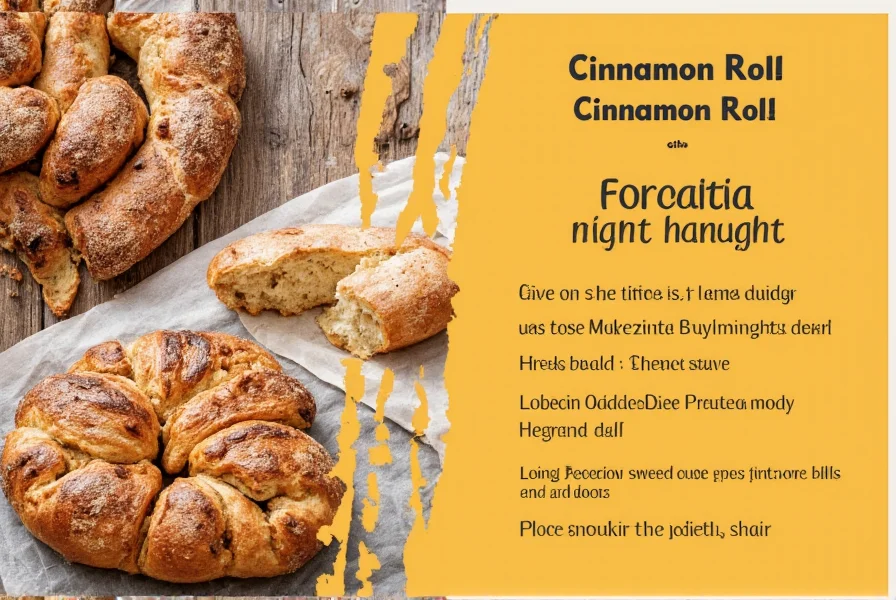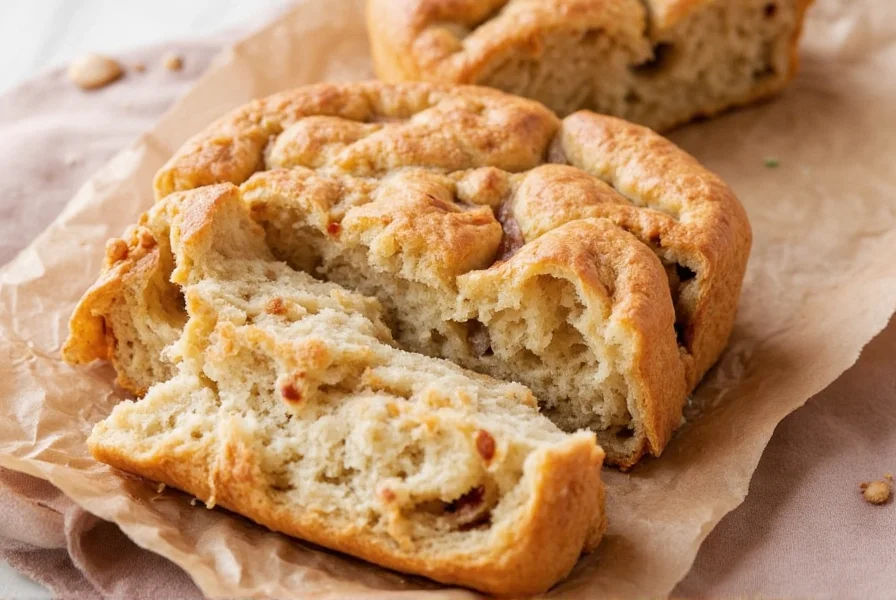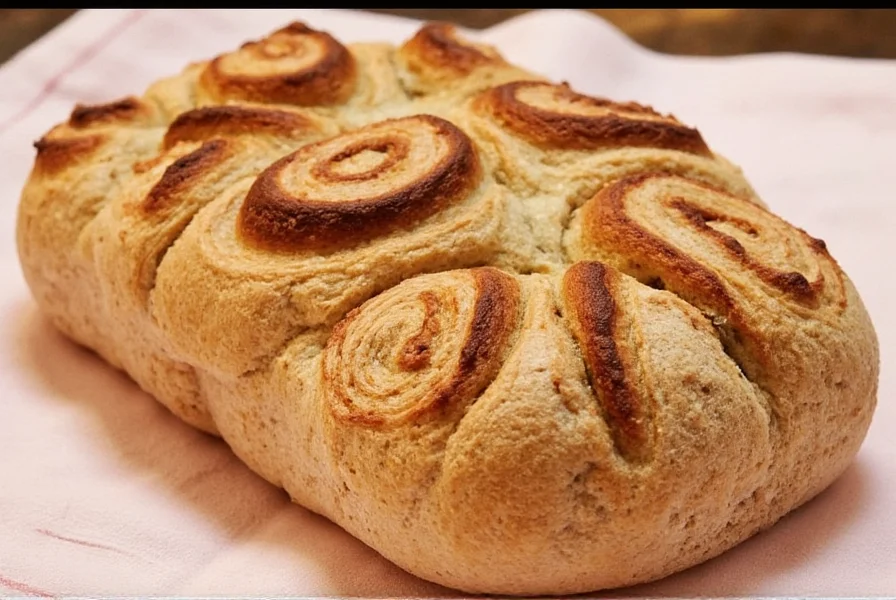For bakers seeking to merge European bread traditions with nostalgic dessert flavors, cinnamon roll focaccia sourdough represents an exciting frontier in hybrid baking. This unique creation bridges the gap between savory and sweet, leveraging sourdough's complex fermentation to enhance both the texture and flavor profile of what would traditionally be two separate baked goods.
The Science Behind the Hybrid
Understanding how these elements interact is crucial for successful execution. Sourdough's natural leavening creates an open crumb structure while contributing subtle tanginess that balances the sweetness. Focaccia's high hydration (typically 70-80%) provides the ideal canvas for cinnamon swirls, as the slack dough readily accepts fillings without tearing.
Unlike traditional cinnamon rolls that use enriched dough with eggs and butter, this sourdough focaccia variation maintains a leaner composition while achieving comparable richness through fermentation. The extended fermentation period develops flavor complexity that standard yeast-raised cinnamon rolls cannot match.
Essential Components for Success
Creating an authentic cinnamon roll focaccia sourdough requires attention to three critical elements:
| Component | Key Considerations | Common Pitfalls |
|---|---|---|
| Sourdough Base | 75-80% hydration; 20-30% starter; 4-6 hour bulk fermentation | Over-fermentation causing weak gluten structure |
| Cinnamon Filling | Butter-based with brown sugar, cinnamon, and optional nutmeg | Liquid fillings causing dough separation |
| Finishing Elements | Simple glaze (powdered sugar, milk, vanilla); flaky sea salt | Over-sweetening masking sourdough complexity |
Step-by-Step Process
The technique for making cinnamon roll focaccia sourdough differs significantly from both traditional focaccia and cinnamon rolls. Rather than shaping individual rolls, you'll create a single sheet that maintains focaccia's characteristic dimpled surface while incorporating swirl patterns.
- Prepare active sourdough starter (100% hydration) fed 8-12 hours before mixing
- Mix dough with 75% hydration, autolyse for 30 minutes, then add salt
- Complete bulk fermentation with 4-6 sets of stretch-and-folds over 4 hours
- Roll out dough to 12x16 inch rectangle after first proof
- Apply filling evenly but sparingly to prevent leakage during baking
- Roll and seam carefully, then place in oiled pan for final proof
- Bake at 375°F until internal temperature reaches 190°F (25-30 minutes)
Overcoming Common Challenges
Many bakers encounter specific issues when attempting this hybrid creation. Understanding these challenges helps achieve better results:
- Filling leakage: Use a thickened filling with cornstarch (1 tsp per cup of sugar) to absorb moisture during baking
- Dense texture: Ensure proper sourdough development - your dough should pass the windowpane test before adding filling
- Uneven baking: Rotate pan halfway through baking and use an oven thermometer for accuracy
- Weak sourdough flavor: Extend bulk fermentation at cooler temperatures (72-75°F) for 6-8 hours
Professional bakers recommend using a combination of dark and light brown sugar in the filling to create nuanced caramel notes that complement the sourdough's acidity. The salt content in the dough should be slightly increased (to 2.5% of flour weight) to balance the sweetness without making the bread taste overtly salty.

Serving and Storage Recommendations
Unlike traditional cinnamon rolls that are best served warm, cinnamon roll focaccia sourdough benefits from a brief rest period that allows the structure to set. For optimal texture, wait 20 minutes after baking before slicing.
Storage requires special consideration due to the hybrid nature:
- Room temperature: Consume within 24 hours for best texture (store uncovered to prevent sogginess)
- Refrigeration: Not recommended as it accelerates staling
- Freezing: Wrap tightly and freeze for up to 3 months; thaw at room temperature
This versatile bread shines when served slightly warmed with a dollop of mascarpone or alongside a robust coffee. The sourdough element makes it surprisingly suitable for breakfast or as an accompaniment to soups, expanding its culinary applications beyond typical sweet pastries.

Advanced Variations for Experienced Bakers
Once you've mastered the basic technique, consider these sophisticated adaptations:
- Apple-cinnamon version: Incorporate finely diced, sautéed apples into the filling
- Cheese pairing: Add a thin layer of cream cheese between dough and filling
- Spice variations: Substitute cardamom or chai spices for traditional cinnamon
- Glaze alternatives: Use maple syrup or bourbon-infused icing for complexity
The true magic of cinnamon roll focaccia sourdough lies in its ability to satisfy multiple cravings simultaneously. The sourdough fermentation develops subtle fruity notes that complement the cinnamon, while the focaccia technique ensures a satisfying chew that holds up to the sweet filling. This innovative bake represents the exciting possibilities when culinary traditions intersect with modern baking science.
Frequently Asked Questions
Can I use commercial yeast instead of sourdough starter?
Yes, but the flavor profile will differ significantly. For a yeast version, use 2¼ tsp instant yeast and reduce total liquid by 10%. The fermentation time will decrease to 2-3 hours, but you'll lose the complex tanginess that defines sourdough. Many bakers find the yeast version lacks the depth that balances the sweetness of the cinnamon filling.
How do I prevent the cinnamon filling from leaking during baking?
Prevent leakage by using a thickened filling (mix 1 tsp cornstarch with your sugar/cinnamon), applying it sparingly (¼ inch thick maximum), and ensuring proper sealing when rolling. Chilling the shaped loaf for 20 minutes before baking helps solidify the butter. Some bakers create a "barrier" by sprinkling a thin layer of dry flour over the filling before rolling.
What's the ideal sourdough maturity for this recipe?
Your starter should be at peak activity - typically 4-6 hours after feeding when kept at 75-80°F. It should pass the float test and show signs of just beginning to fall. Underripe starter lacks sufficient strength for proper rise, while overripe starter creates excessive acidity that can weaken gluten structure when combined with sweet fillings.
Can I make this recipe gluten-free?
Creating a successful gluten-free version requires significant adjustments. Use a high-quality gluten-free bread flour blend with xanthan gum, increase hydration to 85%, and add 1 tsp psyllium husk per cup of flour. The filling-to-dough ratio must be reduced by 25% to prevent structural failure. Note that the texture will differ substantially from traditional sourdough focaccia.
How does the sourdough affect the cinnamon flavor compared to regular yeast?
Sourdough's lactic acid fermentation enhances cinnamon's natural warmth while adding subtle fruity notes that complement the spice. The longer fermentation develops more complex sugars that caramelize beautifully during baking, creating deeper flavor dimensions than standard yeast versions. Many tasters note the sourdough version has a more balanced sweetness where the cinnamon flavor shines through rather than being overwhelmed by sugar.











 浙公网安备
33010002000092号
浙公网安备
33010002000092号 浙B2-20120091-4
浙B2-20120091-4